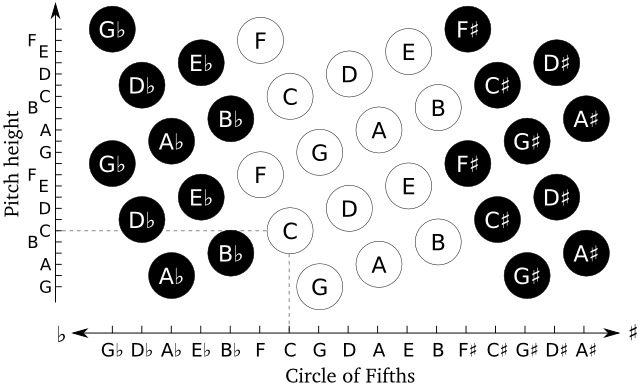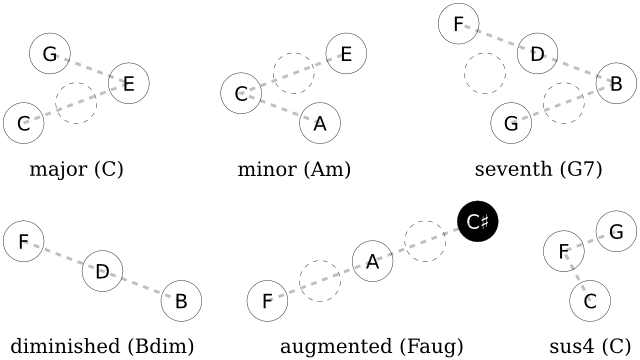The notes on the Striso are arranged following a new note layout, which is designed to give insight in musical patterns and invites to explore and improvise.
In this layout two main properties of notes, pitch height and the location in circle of fifths, are on the axes. Simply said this means that notes in the same musical key are located near each other. This makes it intuitive to play within a certain key, while it’s also intuitive to reach out for a more dissonant note.

Since this layout is very systematic, intervals, chords and scales have the same shape in every key. Below the shape of some common chords is shown.

All chords have the same shape for every base note.
This property is called isomorphism, and for a long time people have been thinking about isomorphic note layouts. This layout is closely related to the Wicki/Hayden layout and Bosanquet’s generalized keyboard. Compared to the Wicki/Hayden layout the Striso layout has the benefit of a clear pitch height direction, which makes it more intuitive to play.
Another interesting property is that the layout is tuning invariant. Since the sharp and the flat notes are separated it is possible to tune them differently, making it possible to play for example in meantone tunings without having a wolf interval.
Mathematically said, this layout is an orthogonal decomposition of the first two overtones. To make a distinction between the note layout and the Striso instruments the note layout is called the DCompose note layout, referring to the mathematical ‘decomposition’, the musical term ‘compose’ and the note D, which is the central note in this layout.